The Republic of Burundi is a state located in eastern Africa, bordering Tanzania, the Democratic Republic of Congo and Rwanda. Its territory is 27.8 thousand km2, with a population of 11 million people. It is considered one of the least developed countries in the world.
This is what the modern flag of Burundi looks like:
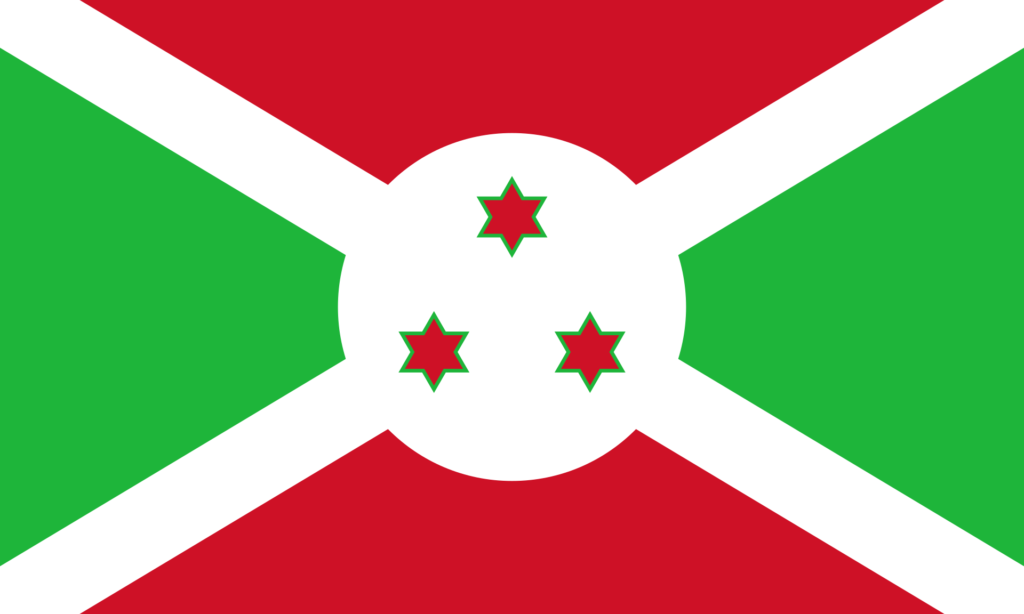
History of the flag
Little is known about the ancient and medieval history of Burundi. The first state entity in the form of a kingdom was formed in the 17th century. In the 80s of the 19th century, when Africa was divided between European countries, Burundi became a colony of Germany. At that time, the symbol of the German Empire was used for it. It remained as such until the end of World War I.

After that it passed to Belgium, and the flag used was the Belgian flag.

In 1961, the first elections were won by a party that opposed the colonial status of the country and, in the same year, the official flag of Burundi was adopted.
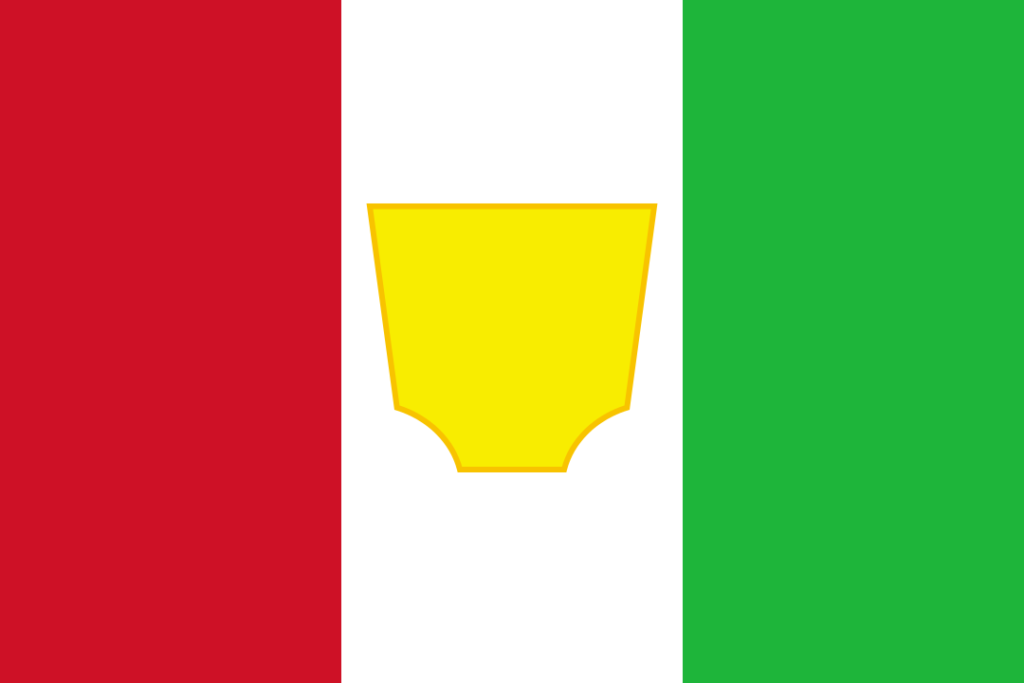
In 1962, independence was proclaimed and the first national flag was adopted. After several years of inter-ethnic confrontation, coups and overthrow of leaders, Burundi became a Republic in 1966, and the colonel who had carried out the military coup became its first president.
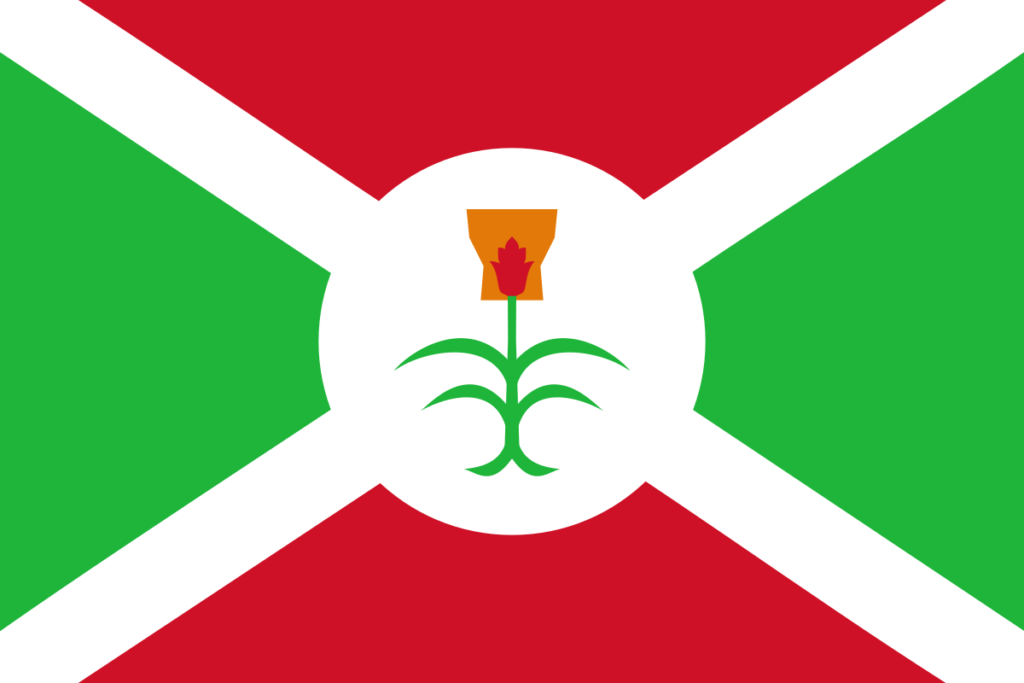
Between 1966 and 1967 Burundi changed three versions of the flag:
- The first of these looked like a combination of red and green fields with crossed white stripes with a circle in the center of the cloth.
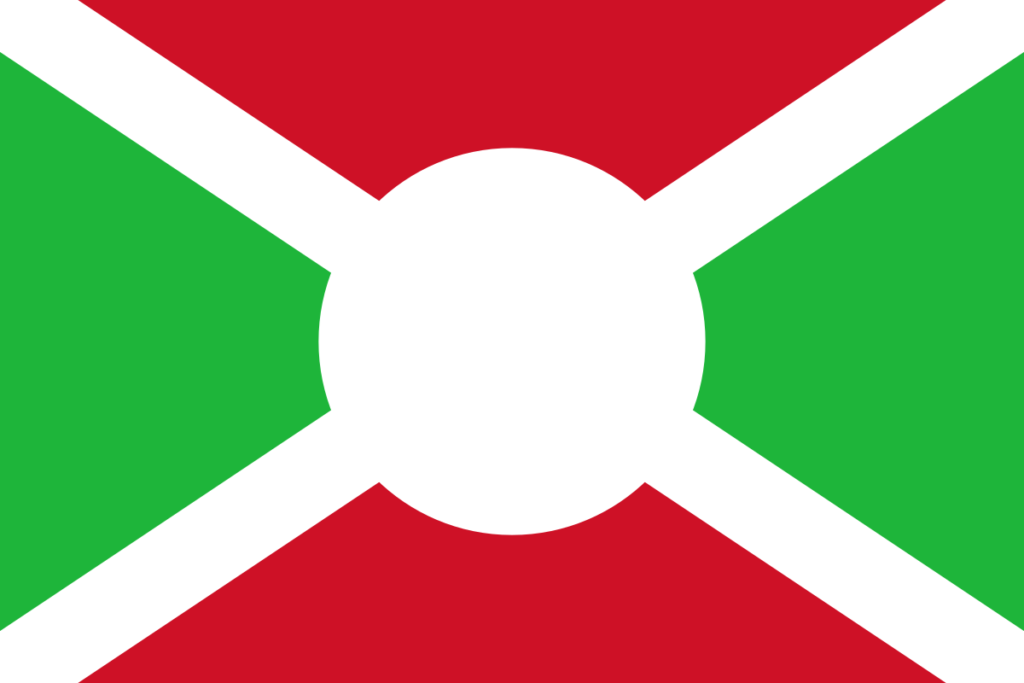
- This was followed by a variant with the same configuration, but with an additional element in the form of a flower in the center of the circle.
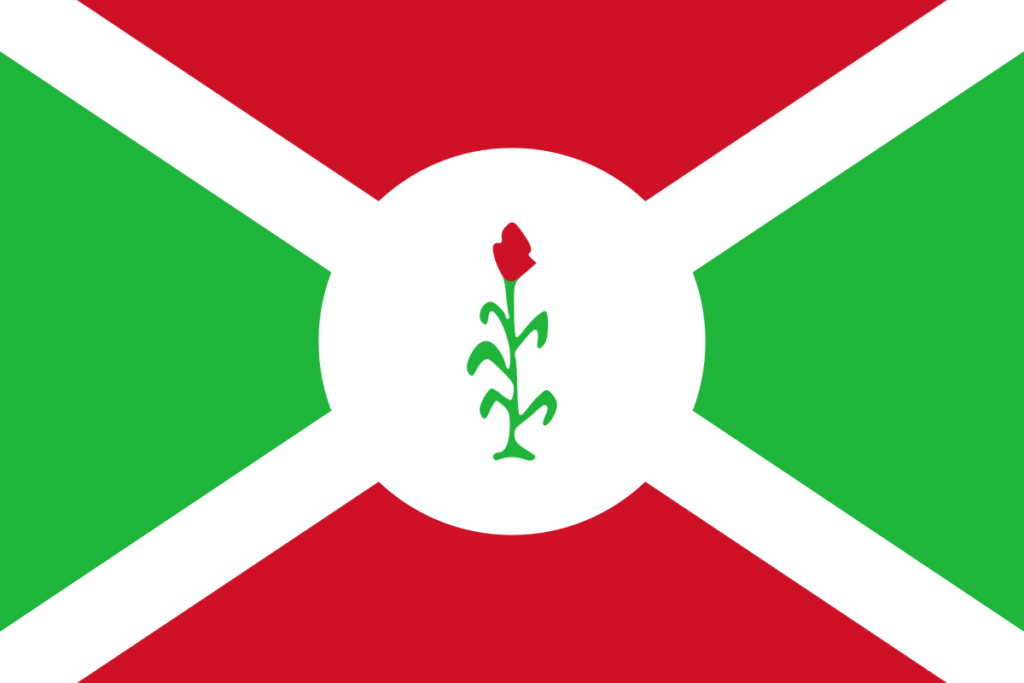
- By the fifth anniversary of independence (1967) the final version of the state symbol was adopted.
In 1982 the flag was slightly adjusted in size, but the overall image remained unchanged.
Description
The national symbol of the Republic is a rectangle of red, green and white. The aspect ratio is 3 to 5. The cloth is crossed diagonally by a white cross, joining in the center as a circle, and the red and green colors are divided into four parts — two for each color: red at the top and bottom, green on the right and left. In the center of the flag in its white circle are three six-pointed stars in red with a green outline.
Flag colors
Burundi’s national symbol uses three colors: red, green, and white.
Meaning of colors and flag symbol
The colors of the flag symbolize:
- Green — hope for the country’s well-being;
- Red — struggle for independence and spilled blood;
- White — the desire for peace.
The stars in the center represent Burundi’s motto: «Unity. Work. Progress.»
Sometimes the three stars are explained differently — the three main ethnic groups of the country: the Tutsis, the Hutus and the Twas.
General information about Burundi
| Official language | Rundy and French |
| Capital | Gitega |
| Territory | 27 830 km2 |
| Population | 11 099 298 people |
| Currency | Burundian franc
(BIF, code 108) |
| Phone Code | +257 |










Как Лидия, хочу отметить, что флаг Бурунди действительно символизирует богатую историю и культуру этой страны. Его яркие цвета — красный, зеленый и белый — несут глубокий смысл. Красный олицетворяет борьбу за независимость, зеленый символизирует надежду и процветание, а белый — мир. Интересно также, как три звезды на флаге представляют три крупнейшие этнические группы страны. Это важно для укрепления единства и понимания между народами. Флаг не только красив, но и насыщен символикой, что делает его особенно значимым для граждан Бурунди.
Ты абсолютно прав, Лидия! Флаг — это не просто красивая картинка. Он может рассказывать историю нации. В университете у нас была похожая тема, и мы обсуждали символику флагов разных стран. Удивительно, как такой простой элемент может объединять людей и передавать их ценности.
Как Патриция, полностью согласна! Помню, как в университете изучала историю флагов, и меня впечатлило, как символы объединяют людей. В моем родном городе тоже есть флаг с глубоким смыслом, напоминающий нам о единстве и надежде на лучшее будущее.
I remember the first time I saw the flag of Burundi. Its bold colors and unique design caught my eye. It reminded me of the rich culture and history behind it. Flags can really tell a story, and Burundi’s flag definitely does just that! It’s inspiring!
As a guy who loves unique flags, the Burundi flag totally caught my eye! Its vibrant colors and cool patterns remind me of hiking through East African trails last summer — the culture and history felt alive. Flags really tell stories, don’t they? Super cool!
As a woman who’s always been curious about flags, I once got a chance to see the Burundi flag up close during a cultural event. The colors and design were so vibrant! It really made me appreciate the rich history behind every flag. Truly grateful for moments like that!